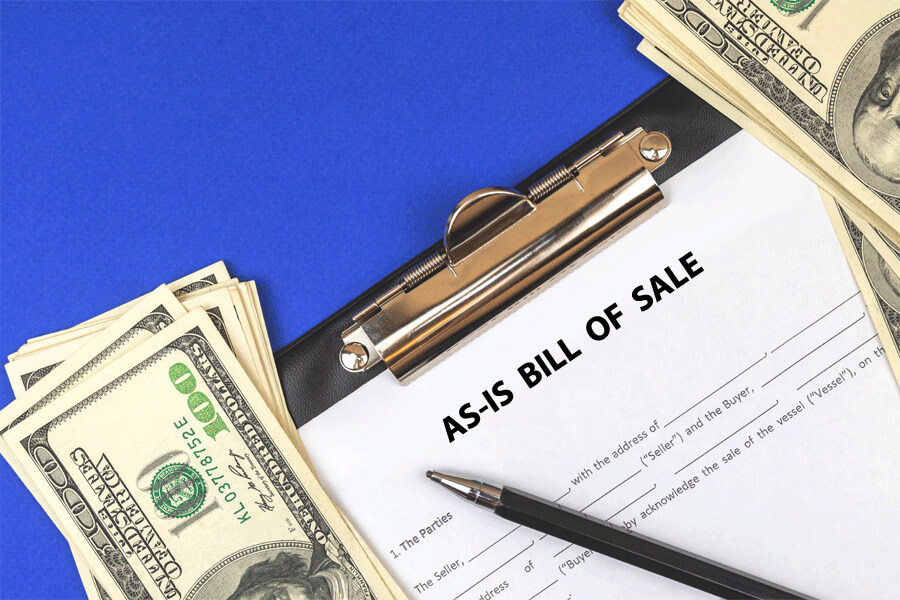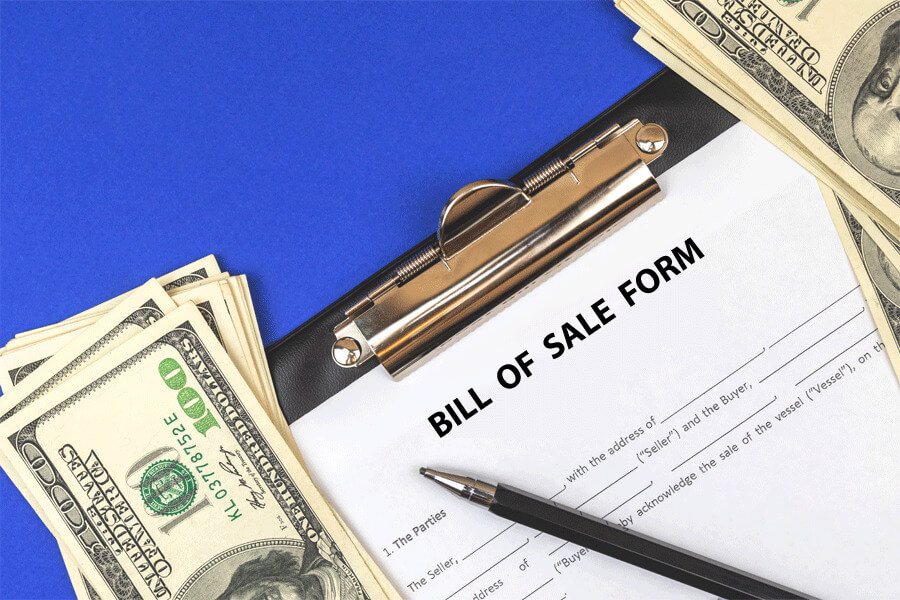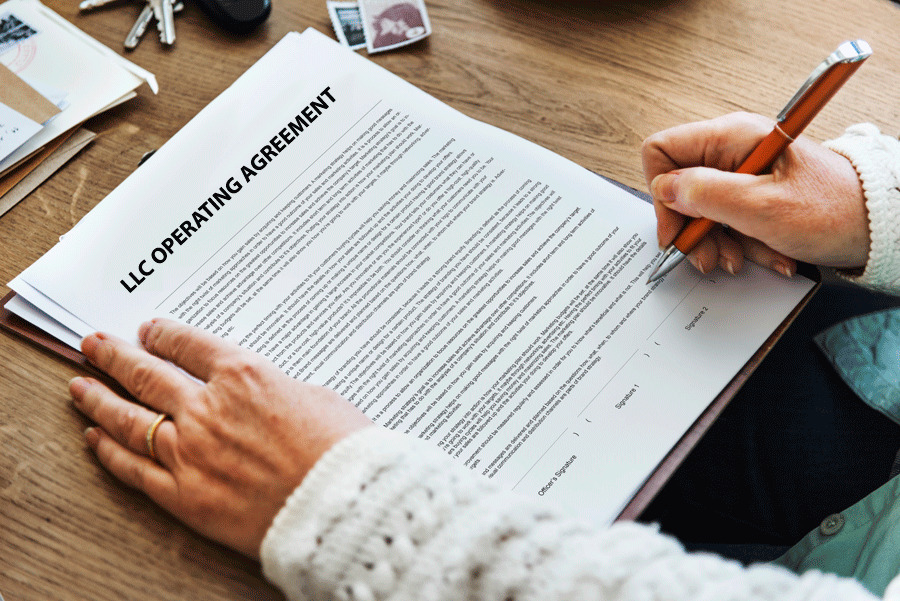A Notarized Bill of Sale Form is a legal document designed to allow and record the transfer of ownership of personal property from a seller to a buyer.
It can be used to certify the transfer of ownership of any valuable item, including jewelry, motor vehicles, equipment, animals, aircraft, firearms and hunting gears, electric appliances and gadgets, boats, among others.
Whereas most states in the United States do not require a notarized bill of sale, it is still essential to ensure that your bill of sale contains fields to allow for notarization. Notarization can be defined as the process of having a licensed/certified third party witness the signing of the bill of sale form. The main purpose of having the bill of sale form notarized is to prevent any potential fraud.
A typical notarized bill of sale form contains information such as the seller’s and buyer’s personal information, a description of the item (s) being transferred, the agreed-upon purchase price, the date of sale, warranties/representations, an ‘as is’ clause (if applicable), identification of the state whose laws govern the transaction, signatures of both the seller and the buyer, and an accredited notary citizen’s signature and official stamp.
Free Templates
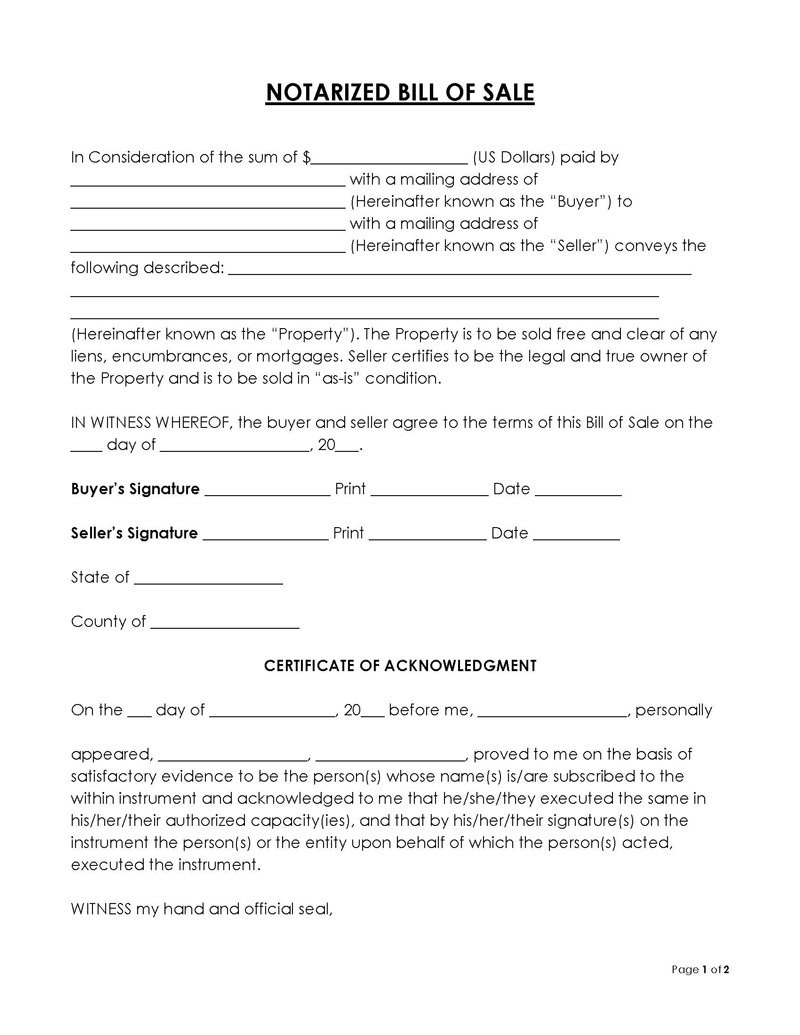
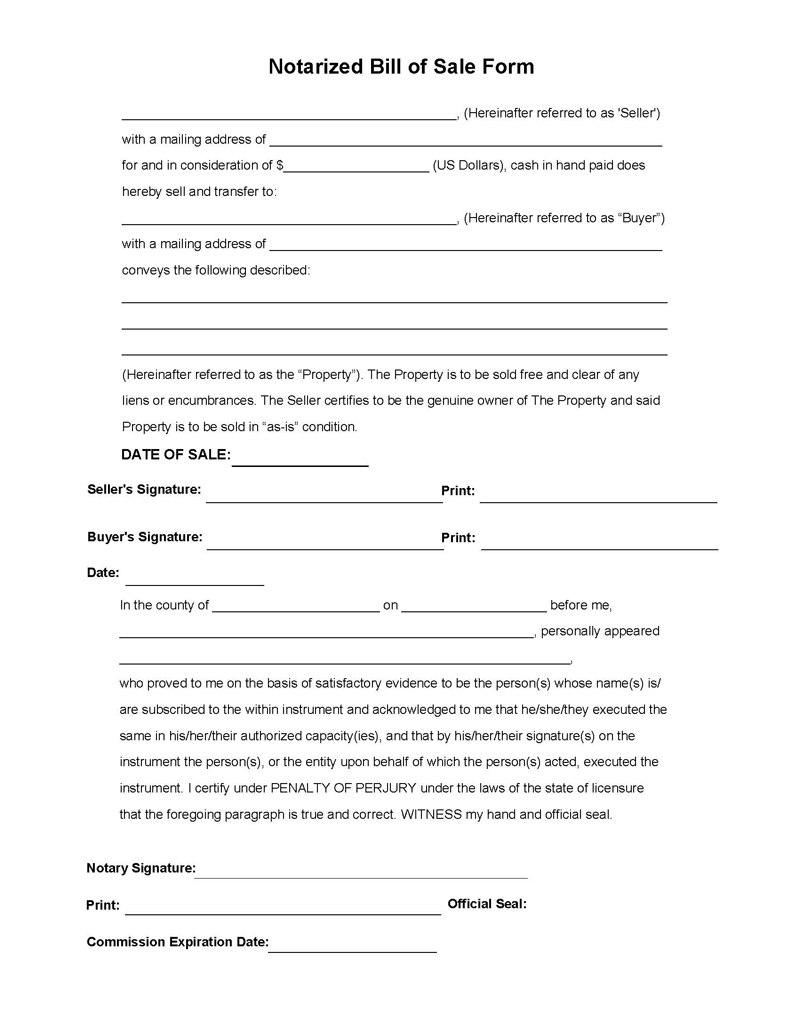
Key Reasons to Notarize a Bill of Sale
Generally, some bill of sale forms need to be notarized, while others do not. Based on the type needed, notarization can be required by local, state, or federal laws to make the transfer of ownership of personal property from one party to another smoother and more secure. Even though one may not be legally required to have their bill of sale form notarized, it is greatly encouraged to do so in order to prove that the transaction was legitimate.
Here are the key reasons for notarizing the bill of sale:
Protects against fraud
A notarized bill of sale form protects both the seller and the buyer from any fraudulent sale. This is simply because the accredited notary public will witness the transaction, place their signature and official stamp onto the bill of sale form, and keep a record of the notarization of the bill of sale in their office.
This is beneficial to both the seller in that it ensures the seller is paid and the buyer gets ownership rights to the stated property, mitigating any potential misconduct or fraud.
Required to transfer titles and registration
The form is necessary for the transfer of titles and registration. Though a completed bill of sale form is a useful document, ownership of certain properties does not legitimately change hands until the title is transferred to the new owner and registration paperwork is completed.
Certain public agencies and offices require a notarized bill of sale form to complete the necessary paperwork to transfer title and register the merchandise under the new owner’s name.
Required for certain private sales
While a notarized bill of sale is not necessary to transfer ownership of every private property, it is mandatory for certain private sales, including motor vehicles, heavy machinery, airplanes, and guns/firearms. Local, state, and federal governments set and govern these requirements, and they usually vary from state to state.
As such, sellers and buyers must check the laws and regulations relevant to their state before engaging in the above-mentioned private sales.
Ensure that parties understand and agree to the terms
Notarization typically involves a government-commissioned representative verifying that the signature on a bill of sale form is legitimate. This also entails establishing whether the signer understands what they are signing, confirming that they are signing at their own discretion and that both parties have the mental capacity to finalize the legally binding agreement. This provides a further level of legitimacy to the execution of the bill of sale form.
Gives confidence for completion of forms and endorsements
The sale of some valuable items might sometimes involve certain considerations or a special language that might be unclear to the parties involved in the transaction. Signing the bill of sale form before a licensed notary public allows for further clarifications as the notary public will typically walk both parties through the entire process.
After the seller and the buyer have agreed to the terms of the sale, duly filled the form, and signed it, the notary citizen will inspect it then endorse it by providing their name and signature and attaching their official stamp onto the form. This makes the terms of the agreement legally binding to both the seller and the buyer.
How to Complete a Notarized Bill of Sale Form
Completing a bill of sale form is a simple and straightforward exercise, especially if you already have an appropriate bill of sale template. The bill of sale form templates can be downloaded in any format and customized to suit the user’s specific requirements.
Once you have downloaded the right bill of sale form suited for your specific transaction, you should complete it by providing the following essential information:
Enter the seller and buyer’s information
The first field on a typical bill of sale form usually contains blank spaces for writing the seller’s information. This includes the official names of the seller, their addresses, and corresponding contact information.
Next, enter the buyer’s information, including their official name, residence address, and relevant contact information if applicable.
Describe the item being sold
After providing the seller and buyer’s information, provide a detailed description of the item being sold, including its identifying features, serial numbers, color, design, distinguishing marks, faults, if any, among others.
However, depending on the type of property being sold, you might be required to add additional information.
EXAMPLE
If the item is a motor vehicle, additional data to supply in the bill of sale form include its make, model, year, vehicle identification number, license plate number, as well as odometer reading.
If there are any special conditions to the sale, for instance, sold as is, sold with a warranty, etc., it is important to consider including such information in this section.
Purchase price
The following section involves filling in the purchase/selling price of the item being sold. It is essential to input the purchase price in both words and numerals.
It is also essential to specify the mode of payment used, for example, paid in installment or the total amount, cash transaction paid via a check, credit card, or bank deposit.
Signatures of both parties
Once both the involved parties have agreed to the terms of the sale and completed the bill of sale form, they can provide their signatures in their designated blank spaces. However, this should be done in the presence of an accredited notary public who will oversee the entire process.
Contingent to your specific needs, you can choose any of the following notary services to have the bill of sale form notarized. This includes the traditional notaries, electronic notaries, mobile notaries, and online notaries.
Date
Once the parties involved in the sale of the item have signed the bill of sale form, it is time to date the bill of sale form under the instructions of the certified notary. The data provided should be current, that is, the date on which the bill of sale form is signed, and it should follow the date/month/year format.
Certificate of acknowledgment
The licensed notary usually completes the last section of the form according to the specifications provided by the relevant local, state, or federal laws. Information to enter in this section includes the licensee’s county, the current date, the notary public’s printed name, seller’s printed name, notary public’s signature, notary’s commission expiration date, and finally attach an official stamp/seal.
Final Thoughts
A notarized bill of sale form is an important document that proves the legitimacy of the transfer of ownership of any valuable property from a seller to a buyer. It is important to both the buyer and the seller in that it protects them from any potential fraud or scams, ensures a smoother and secure change of ownership, gives both the buyer and the seller more confidence in the transaction, and it may also be required for future paperwork.
While this form is only mandatory for certain private purchases and transactions, it is greatly recommended that buyers and sellers of any valuable items consider notarizing their bill of sale forms to provide them with extra protection.







